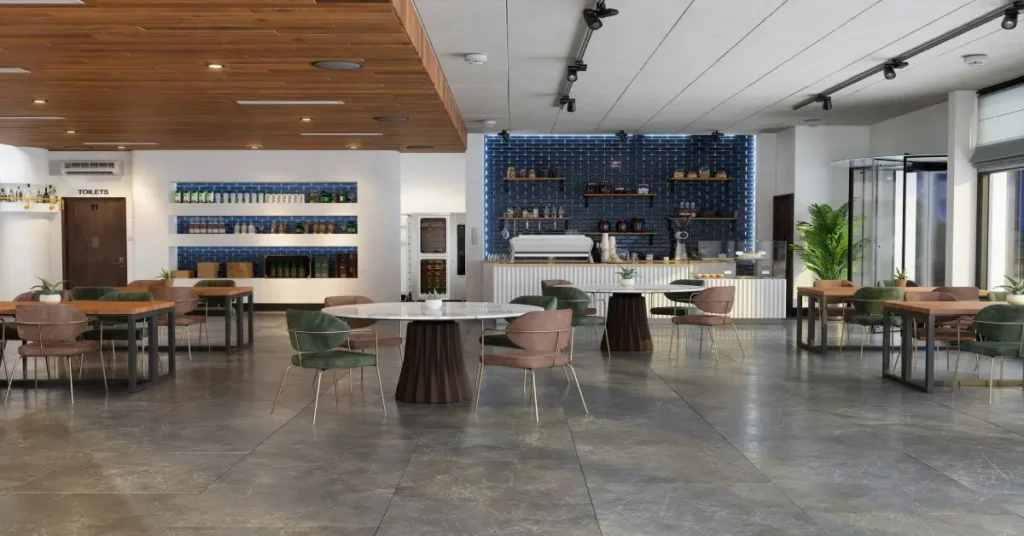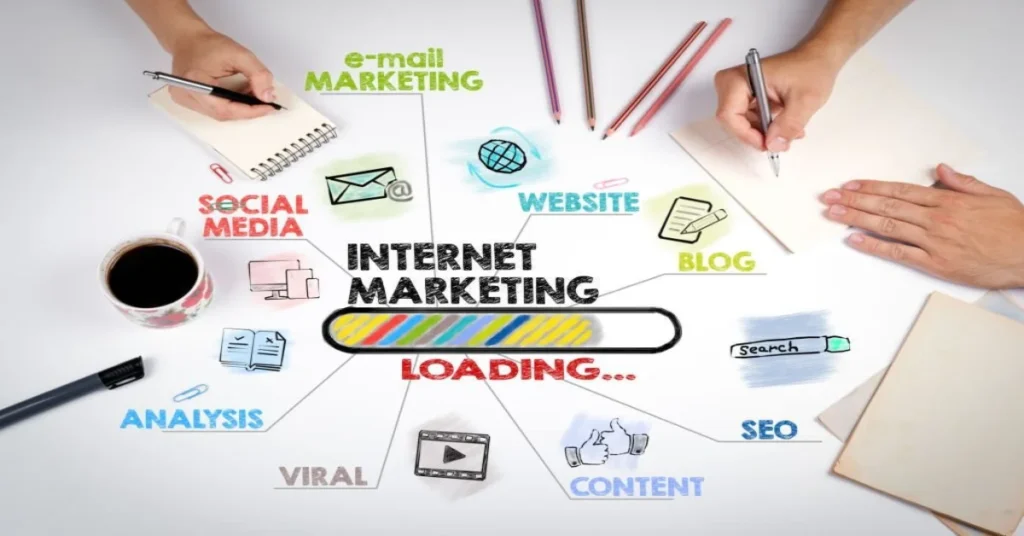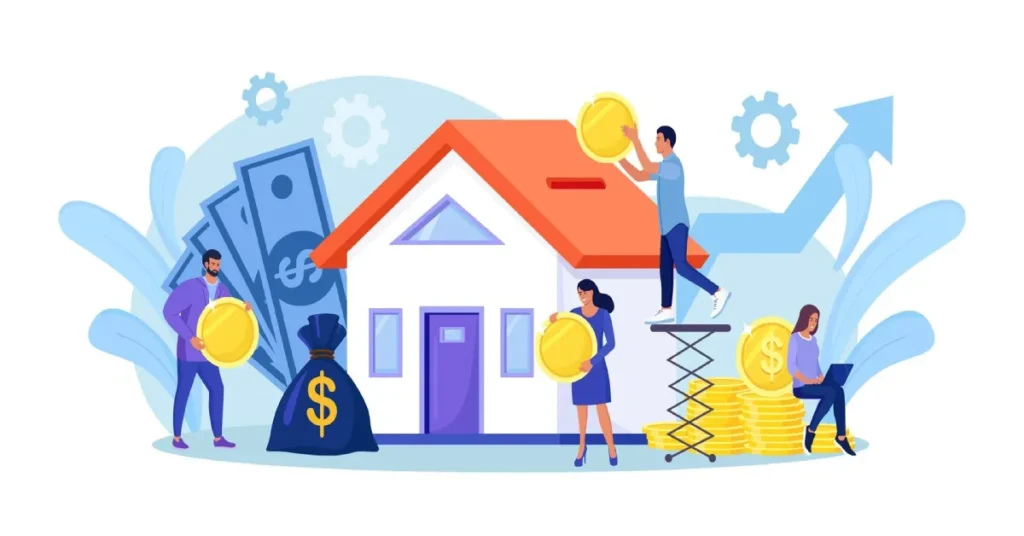Key Takeaways: Digital Marketing for Restaurants:
- Your website is your digital Office: Make it easy to use, mobile-friendly, and include online ordering/reservations.
- Local SEO is key: Optimize your Google Business Profile to attract nearby diners.
- Social media is your visual storyteller: Share engaging photos and videos, and connect with your audience.
- Email marketing builds loyalty: Nurture customer relationships with personalized offers and updates.
- Reviews shape your reputation: Encourage positive feedback and respond thoughtfully to all comments.
- Paid ads bring new faces: Target specific customers with Google Ads and social media campaigns.
- Data helps you understand: Analyze information from your sales and marketing efforts to make smarter choices.
- Different restaurants need different plans: Tailor your strategy to your unique dining style.
- Plan for challenges: Have a clear approach for managing online reviews and unexpected situations.
- Your team is your best advocate: Encourage employees to share their passion for your restaurant online.
Your Essential Guide to Filling Seats and Building Buzz

Imagine a hungry person, right now, somewhere in a US city. What do they do? They probably grab their phone.
They don’t flip through a phone book or scan newspaper ads. They open Google Maps, search “restaurants near me,” or scroll through Instagram for mouth-watering food photos.
This shift in how people find and choose where to eat makes digital marketing for restaurants not just an option, but a necessity.
In the past, word-of-mouth and local print ads dominated. Today, your restaurant’s digital presence holds immense power.
A study 2025 by the National Restaurant Association predicts the industry will reach $1.5 trillion in sales and employ 15.9 million people by late 2025.
While optimistic, the sector still faces challenges like rising labor and food costs and intense competition.
Consumers are keen to dine out, prioritizing the overall “experience” and value beyond just price.
Operators are focusing on increasing on-premises dining, though off-premises options remain crucial, especially for younger demographics.
Technology investments are key for efficiency and attracting customers.
Recruitment and retention of staff remain top concerns, despite projected job growth. The industry continues to adapt to elevated costs through supplier changes and menu adjustments.
Another study by Fishbowl emphasizes that the restaurant industry is rapidly adopting technology, with 73% of operators increasing tech investments.
This digital push aims to enhance customer experience through data-driven personalization and streamline operations via integrated systems.
Off-premises dining remains vital, especially for convenience-seeking consumers, while on-premises focus is also present.
Evolving consumer preferences lean towards value beyond price, including health-conscious and sustainable options.
Workforce challenges persist, but growth is noted in segments like coffee shops and Asian cuisine. Loyalty programs are crucial for revenue.
This means your website, social media, and online reviews are often the first impression a potential diner gets.
A strong digital strategy helps you reach new customers, keep regulars coming back, and stand out in a busy market.
Your Digital Headquarters: The Restaurant Website
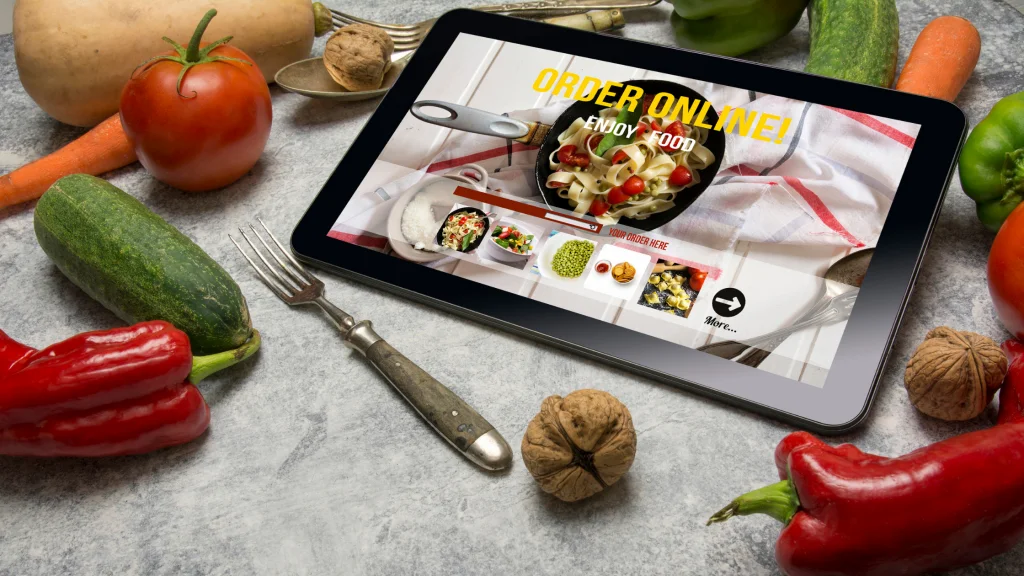
Think of your website as your restaurant’s digital front door. It’s where customers find your menu, book tables, and even place orders.
- Design for Everyone, Especially Mobile: We use our phones for everything. Your website must look great and work perfectly on a small screen. This means easy navigation, big buttons, and quick loading times. If customers struggle to find your menu on their phone, they will likely move on.
- Must-Have Website Features:
- Clear Menu: Show your dishes with great photos. Include both PDF and text versions for easy searching.
- Online Ordering: Make it simple for people to order pickup or delivery directly from your site. Seamless online ordering can make or break a sale. Research from Fishbowl shows that 22% of digital transactions happen directly through a restaurant’s website.
- Reservation System: Let customers book tables with a few clicks. Use popular tools like OpenTable or Resy, or integrate your own system.
- High-Quality Visuals: Use professional photos and videos of your food, drinks, and atmosphere. This helps customers imagine their dining experience.
- Easy Contact Information: Clearly display your address, phone number, hours, and directions.
- “Our Story” Page: Tell your restaurant’s unique story. Customers connect with brands that have personality and passion.
- Blog or News Section: Share updates, special events, or even recipes. This keeps your website fresh and gives customers a reason to revisit.
Understanding the unique demands of the restaurant industry is key, but the fundamentals of getting any venture seen online are universal.
For a broader look at building your online presence, including key strategies applicable to any venture, explore our detailed post on digital marketing for small business owners.
Getting Found Locally: Supercharge Your Local SEO
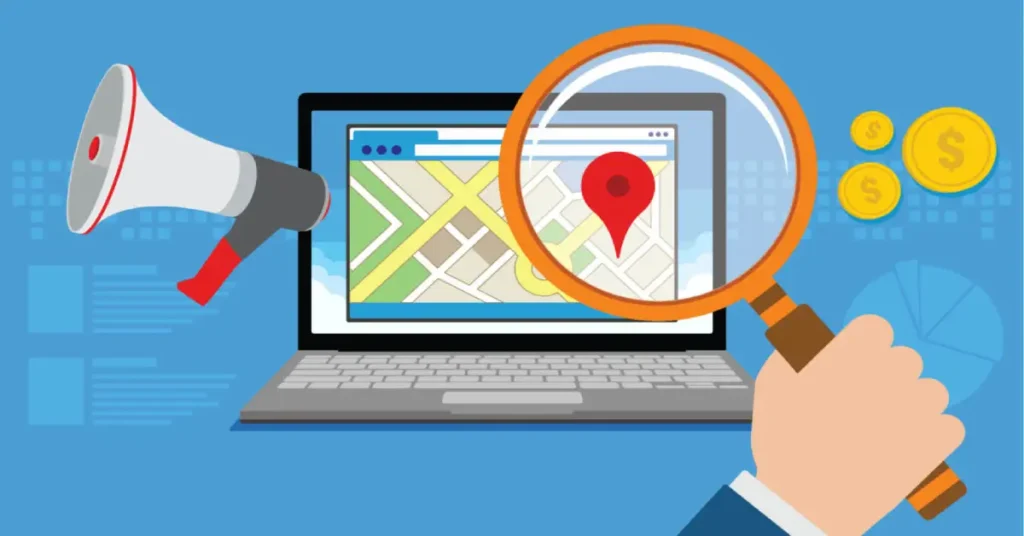
Many diners look for restaurants nearby. Local search engine optimization (SEO) helps your restaurant appear at the top of local search results.
- Google Business Profile is Your Best Friend: This free tool from Google is incredibly powerful.
- Claim and Verify: Make sure you control your listing.
- Accurate Information: Keep your restaurant’s name, address, phone number, and hours perfectly consistent. Inaccurate information frustrates customers and hurts your ranking.
- Photos and Tours: Add high-quality photos of your food, interior, and exterior. Virtual tours can also draw people in.
- Regular Updates: Share specials, events, or temporary hour changes. Use the Q&A section to answer common customer questions.
- Think Like a Local: What do people search for? “Best pizza in Brooklyn,” “vegan restaurant in downtown LA,” or “coffee shops with outdoor seating near me.” Include these phrases on your website and Google Business Profile.
- Online Directories Matter: List your restaurant on sites like Yelp, TripAdvisor, OpenTable, and local food blogs. Make sure your information is correct and consistent across all of them. This builds trust and visibility.
Social Media: Telling Your Story Visually
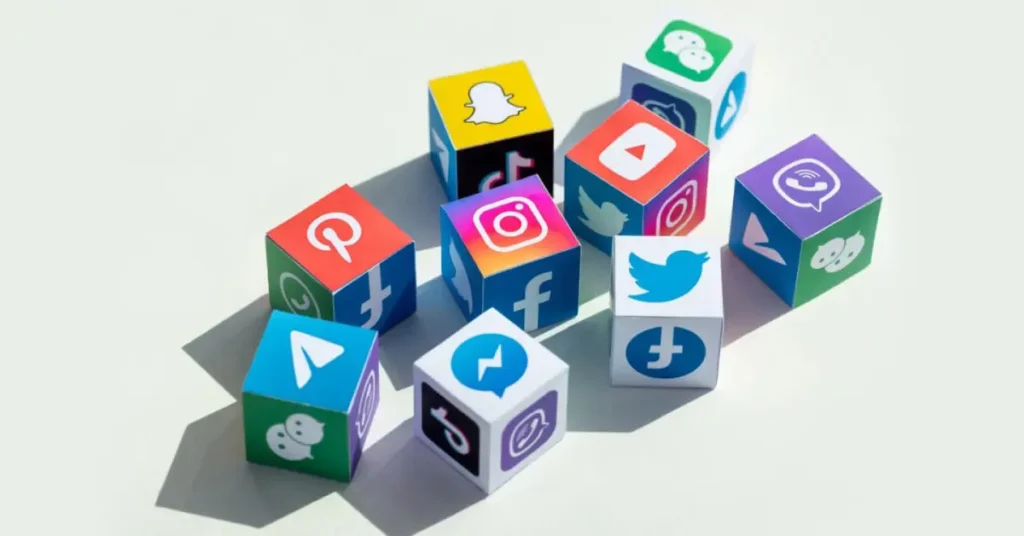
Social media platforms are where you show off your food, your atmosphere, and your personality. It’s a direct line to both potential and current customers.
- Choose the Right Platforms:
- Instagram: It is the top platform for food content. Share beautiful photos and short videos (Reels) of your dishes. Use Instagram Stories for daily specials or behind-the-scenes glimpses.
- Facebook: Build a community. Announce events, share promotions, and engage in local groups. Facebook is still the most-used platform for restaurant discovery, with 59% of diners using it to find new places, according to Cropink.
- TikTok: Reach a younger audience with short, engaging videos. Show your cooking process, funny staff moments, or trending food challenges. 55% of TikTok users visit a restaurant after seeing its menu.
- YouTube: Create longer videos like cooking tutorials or interviews with your chef. This builds a deeper connection.
- Create Engaging Content:
- Stunning Food Photos: This is non-negotiable. Invest in professional food photography.
- Behind-the-Scenes: Show your kitchen, your happy staff, or how you prepare a signature dish. This builds authenticity.
- User-Generated Content (UGC): Encourage customers to share their photos and videos. Re-share their best posts. It’s powerful social proof.
- Contests and Giveaways: Run fun contests to increase engagement and attract new followers.
- Engage with Your Community: Respond to comments and messages quickly. Ask questions. Collaborate with local food influencers. Their recommendations carry weight.
Email Marketing: Building Loyalty and Direct Connections

Email marketing allows you to reach your most engaged customers directly. It is a highly effective way to encourage repeat visits.
- Build Your Email List:
- Website Sign-ups: Offer a discount for signing up.
- In-Store Promotions: Use QR codes or sign-up sheets at the register.
- Loyalty Programs: Link your email list to your loyalty program.
- What to Send:
- Welcome Emails: Greet new subscribers with a special offer.
- Promotions: Share weekly specials, happy hour deals, or new menu items.
- Event Announcements: Promote live music nights, wine tastings, or holiday events.
- Birthday/Anniversary Rewards: Send personalized discounts to celebrate special occasions.
- Personalization & Segmentation: Customers appreciate relevant offers. Use data from your POS system to send tailored emails based on past orders or preferences. If someone frequently orders pasta, send them new pasta dish announcements.
Online Reviews: Your Reputation in the Spotlight

Online reviews are critical. They influence whether a new customer chooses your restaurant. 94% of US clients base their dining decisions on online reviews.
- Ask for Reviews:
- Simply Ask: When a customer compliments their meal, politely ask them to leave a review.
- QR Codes: Place QR codes on receipts or table tents that link directly to your Google, Yelp, or TripAdvisor page.
- Email Requests: Follow up with customers after their visit, inviting them to share feedback.
- Respond to Every Review:
- Thank Positive Reviewers: Show appreciation. A quick “Thank you for your kind words!” goes a long way.
- Address Negative Feedback Thoughtfully: This is crucial. Respond calmly, apologize if appropriate, and offer a solution. Move the conversation offline when possible. “I’m so sorry you had a less-than-perfect experience. Please call us directly so we can make it right.”
- Proactive Crisis Management and Online Reputation: What happens if a major issue hits? Food safety concerns, a public incident, or a wave of negative comments. You need to prepare for these situations.
- My Advice: Develop a “Crisis Communication Plan.” This is like a fire drill for your reputation.
- Form a Small Team: Designate one or two people who will handle communications during a crisis.
- Monitor Constantly: Set up Google Alerts for your restaurant’s name. Use social listening tools to catch mentions immediately. The faster you know, the faster you can respond.
- Have Pre-Approved Messages: Prepare templates for common issues. This speeds up your response time during a stressful moment.
- Be Transparent and Empathetic: Acknowledge the problem. Say you are sorry. Explain what steps you are taking to fix it. This builds trust, even in difficult situations.
- Example: If a health inspection issue goes viral, your plan could involve a public statement on your website and social media, explaining the steps you have taken to correct the problem, like retraining staff and deep cleaning. You might offer a temporary discount to encourage customers to return and see your improvements.
- My Advice: Develop a “Crisis Communication Plan.” This is like a fire drill for your reputation.
Paid Advertising: Amplifying Your Reach

Paid ads get your restaurant in front of new eyes. They offer precise targeting to reach your ideal customers.
- Google Ads:
- Search Ads: Appear when people search for “restaurants near me” or “best burgers in [your city].”
- Display Ads: Show visual ads on websites your target customers visit.
- Geofencing: Target ads to people within a specific radius of your restaurant.
- Social Media Ads (Facebook, Instagram, TikTok):
- Highly Targeted: Platforms like Facebook and Instagram allow you to target ads based on demographics, interests (foodies, parents), and even behaviors.
- Visual Appeal: Use your best food photos and videos.
- Retargeting: Show ads to people who visited your website but didn’t order or reserve.
- Delivery Platform Ads (Uber Eats, DoorDash, Grubhub): Promote your restaurant on these popular apps. This increases your visibility to their large user base, but understand the fees involved.
Advanced Strategies for Restaurant Growth
Many restaurants cover the basics. To truly stand out, we need to go further.
- Digital Marketing for Different Restaurant Types: Does a fine dining restaurant market itself the same way as a quick-service spot or a quirky food truck? Absolutely not! Each needs a tailored approach.
- Fine Dining: Focus on experience, ambiance, chef’s story, and exclusive events. Instagram, high-end food blogs, and reservation platforms are crucial. Think luxurious visuals and sophisticated language.
- Fast Casual/QSR: Emphasize speed, convenience, online ordering, and loyalty programs. Social media challenges, local deals, and quick, digestible content work best.
- Food Trucks/Pop-ups: Real-time location updates on social media (Twitter, Instagram Stories), event promotion, and engaging with hyper-local communities are vital. You need to tell people where to find you right now.
- Niche Cuisines (e.g., Authentic Ethiopian, Vegan): Target specific communities online. Highlight unique ingredients, cultural authenticity, and dietary benefits. Collaborate with relevant food bloggers or community groups.
- Bars & Cafes: Focus on atmosphere, live music, happy hour specials, and unique drink menus. Promote your space as a social hub.
- Real-World ROI and Budgeting: How much money should a restaurant actually spend on digital marketing, and what return can they expect? Let’s get practical.
- Budgeting: Industry averages suggest 3-6% of your total sales for marketing. However, this can vary. A new restaurant might spend more to build awareness, while an established one might focus on retention.
- Example: If your restaurant makes $50,000 in monthly sales, a 5% marketing budget means $2,500. How do you divide that?
- ROI Benchmarks: For every dollar spent on marketing, what do you get back? A “good” ROI for restaurants is often cited as 3:1 to 5:1 ($3-$5 back for every $1 spent).
- Online Ordering Ads: If you spend $100 on an ad for online orders and it brings in $500 in new sales (after food costs), that’s a great return.
- Loyalty Programs: Guests who use digital channels show 24% higher lifetime value. Investing in loyalty programs can have a significant, long-term ROI.
- Beyond the Formula: Remember, not all ROI is immediate sales. Brand awareness, positive sentiment, and customer loyalty also provide value. It’s tough to put a dollar figure on a customer who consistently chooses your restaurant because they love your social media posts.
- Budgeting: Industry averages suggest 3-6% of your total sales for marketing. However, this can vary. A new restaurant might spend more to build awareness, while an established one might focus on retention.
- Practical Data Analytics and Personalization: Everyone talks about “data” and “personalization.” How do I actually do this if I’m not a tech wizard? It’s simpler than you think. Start with the data you already have.
- Your POS System: It holds a treasure trove of information. What are your most popular dishes? Who orders what? When are your busiest times?
- Online Ordering Data: See what individual customers buy. Do they prefer delivery or pickup? Do they order lunch or dinner?
- Email Marketing Software: Track open rates and click-through rates. See which promotions perform best.
- Practical Personalization:
- “You might like…” emails: Based on a customer’s past order (e.g., “You loved our veggie burger, try our new plant-based tacos!”).
- Timed offers: If a customer usually orders on Fridays, send them a Friday special email.
- Birthday treats: Automatically send a discount for their birthday.
- Fishbowl reports that 76% of leading restaurants use triggered campaign automation and 64% use dynamic content personalization.
- Building a Thriving Online Community and Bridging Online to Offline: How do I turn online followers into loyal customers who actually visit my restaurant? Build a real connection, not just a following.
- Host Virtual Events: A live cooking demo with your chef, a Q&A session about your menu, or a virtual tasting for loyalty members.
- Highlight In-Store Experiences Online: Share photos of happy customers dining, live music nights, or your unique decor. Make people feel like they’re missing out.
- “Digital Only” Specials for In-Store Redemption: Post a special discount code only on your social media that customers must mention when they order in person. This drives foot traffic.
- Loyalty Programs that Connect: Use a system that tracks both online and in-store purchases, rewarding customers no matter how they order.
- Leveraging Employee Advocacy – Your Team as Brand Ambassadors: How can my staff help spread the word about my restaurant online? Your employees are your greatest asset. They know your food, your atmosphere, and your passion.
- Encourage Sharing: Create a simple social media policy that empowers staff to share positive experiences.
- Provide Content: Make it easy for them. Offer high-quality photos, fun behind-the-scenes videos, or pre-written captions they can use.
- Share Their Stories: Highlight staff members on your official channels. “Meet Sarah, our amazing barista!” This humanizes your brand.
- Why It Works: People trust recommendations from people they know. 88% of consumers trust recommendations from people they know over traditional advertising, says Room 1903. An employee’s genuine post is far more impactful than a polished ad.
- The Edge of Tomorrow: Emerging Technologies: What’s next for digital marketing for restaurants? The future promises exciting possibilities.
- Artificial Intelligence (AI) & Machine Learning: We already see AI in chatbots and personalized marketing. But imagine:
- AI-Powered Menu Recommendations: Your website or app suggests dishes based on your past orders, dietary restrictions, and even the current weather.
- AI-Generated Social Media Content: AI helps create compelling captions, ad copy, or even video scripts.
- Dynamic Pricing: AI could adjust menu prices in real-time based on demand, ingredient costs, or even local events.
- Voice Search: More people use voice assistants (“Hey Google, find an Italian restaurant with outdoor seating”). Optimize your content for these natural language queries.
- Augmented Reality (AR) & Virtual Reality (VR): Potential for immersive menu experiences or virtual tours. This is still early, but it’s coming.
- Sustainable Marketing Practices: Highlight eco-friendly initiatives through digital channels to appeal to conscious consumers.
- Artificial Intelligence (AI) & Machine Learning: We already see AI in chatbots and personalized marketing. But imagine:
Choosing Your Digital Marketing Partner: DIY or Hire Experts?

There are two main paths to managing your restaurant’s digital marketing: do it yourself or hire a professional agency.
- Doing It Yourself:
- Pros: Complete control, you learn new skills, and potentially lower direct costs (no agency fees).
- Cons: Time-consuming, requires learning many different skills, might lack the specialized expertise of an agency.
- Hiring an Agency:
- Pros: Access to expert knowledge, saves your time, often has specialized tools, and can scale efforts quickly.
- Cons: Higher financial cost, less direct control over daily tasks.
- What to Look For in an Agency:
- Restaurant Experience: Have they worked with other restaurants?
- Proven Results: Ask for case studies and concrete ROI examples.
- Transparent Reporting: They should clearly show you where your money goes and what results it brings.
- Good Communication: You should feel comfortable talking with them.
- Pricing: Understand their fee structure.
Conclusion: A Digital Recipe for Restaurant Success
Digital marketing for restaurants is not just about having a website or a social media page. It is about crafting a compelling online presence that tells your story, connects with your audience, and drives customers to your tables.
We’ve covered the core digital marketing approaches for restaurants, but for those ready to explore more nuanced tactics, platforms like Reddit offer distinct advantages.
Discover how to effectively navigate its unique environment and build a loyal following by understanding a tailored Reddit marketing strategy.
Your online efforts build the bridge to your amazing food and in-person experience. That delicious blend of digital savvy and culinary excellence creates lasting success.

